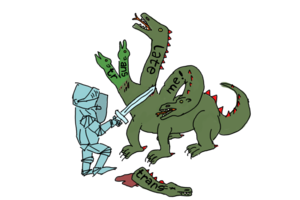Constituency Trees: Difference between revisions
Jump to navigation
Jump to search
No edit summary |
No edit summary |
||
| Line 10: | Line 10: | ||
== Context Free Grammar == | == Context Free Grammar == | ||
Grammars, generally, are a way of describing a potentially infinite set of strings (sentences) using a finite set of production rules. | Grammars, generally, are a way of describing a potentially infinite set of strings (sentences) using a finite set of production rules. In a [[https://en.wikipedia.org/wiki/Context-free_grammar context-free grammar]], production rules take the following form: | ||
V → w | |||
V is a non-terminal symbol (for natural languages, non-terminals usually correspond to **phrases**, such as NP for noun phrases) and w is a (non-empty) string of terminals (words) and nonterminals. It is known that CFGs cannot fully describe natural languages but for MT, they can serve as a very useful simplification. | |||
== Syntax in Machine Translation == | == Syntax in Machine Translation == | ||
Revision as of 09:40, 6 August 2015
 | |
| Lecture video: |
web TODO Youtube |
|---|---|
{{#ev:youtube|https://www.youtube.com/watch?v=y_9SEdG1u3U%7C800%7Ccenter}}
Context Free Grammar
Grammars, generally, are a way of describing a potentially infinite set of strings (sentences) using a finite set of production rules. In a [context-free grammar], production rules take the following form:
V → w
V is a non-terminal symbol (for natural languages, non-terminals usually correspond to **phrases**, such as NP for noun phrases) and w is a (non-empty) string of terminals (words) and nonterminals. It is known that CFGs cannot fully describe natural languages but for MT, they can serve as a very useful simplification.